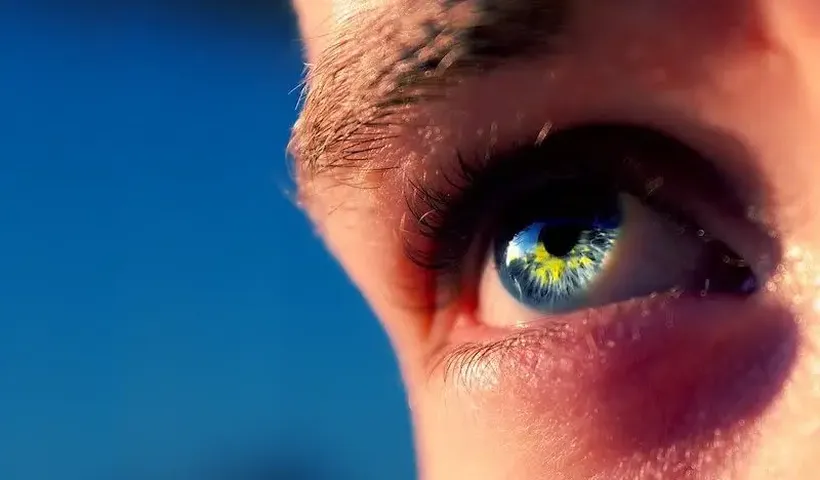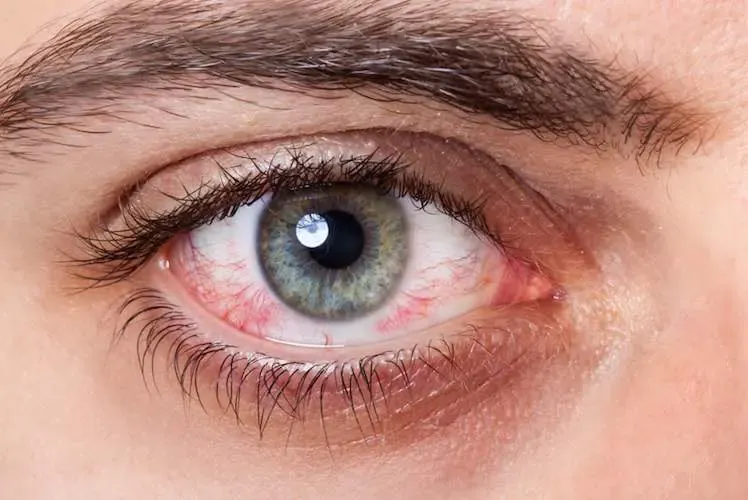
How to buy and choose the best sunglasses

What is Eye Sunburn, Prevention and Treatment
Summer is a season brimming with life and vitality, where the radiant sun warms the days and delights the heart. However, to fully enjoy this amazing season, with this sunlight exposure, one must wisely protect their eyes from the scorching rays of the sun because of eye diseases. In this article, we intend to examine the damages that sunlight can inflict on the eyes and offer strategies for protecting these sensitive organs. With the direct and prolonged exposure to sunlight in the summer, our bodies are increasingly at risk from harmful rays, which can damage various organs, especially the eyes and causes some disease.

You may be aware that sunlight can be beneficial to human health, but this issue is completely different when it comes to our eyes. Sunlight contains rays that can harm the eyes, and in some cases, the damage caused by them outweighs their benefits. These injuries are mainly due to ultraviolet rays, which can cause eye diseases such as cataracts and other visual disorders. Therefore, while sunlight is beneficial for the production of Vitamin D and mood improvement, protecting the eyes against its harmful rays is of great importance. The use of quality sunglasses and wide-brimmed hats can help reduce direct sunlight exposure with these rays and preserve vision health.
The increase of sunlight exposure and eye diseases during the warm season
Have you ever wondered why the sun’s rays can cause more damage to our eyes during the warm season? In this season, with the intensification of solar radiation, the amount of harmful ultraviolet rays reaching the Earth’s surface increases. These invisible rays, which cannot be seen with the naked eye, can cause serious side effects for the health of the eyes due to sunlight exposure. Direct and prolonged exposure to these rays can lead to permanent damage in the sensitive tissues of the eye and increase the risk of various eye diseases such as cataracts. Additionally, the rise in temperature during the summer causes more people to spend time outdoors, which in turn increases exposure to the harmful rays of the sun.

Therefore, protecting the eyes against ultraviolet rays, especially during the summer season, is of great importance, and the use of high-quality sunglasses with 100% ultraviolet filtration or the UV400 sunglasses standard is recommended. These glasses can help reduce the risk of damage from harmful rays and preserve the health of the eyes against destructive environmental factors. Ultimately, raising public awareness about the dangers of sunlight and the importance of protecting the eyes can significantly contribute to the prevention of eye diseases.
In this section of the article, we want to explain the types of significant eye damage caused by the effects of sunlight and our eyes’ exposure to it. Each of these eye diseases can be important and serious in its own right, so we recommend you stay with us until the end of the article.
Keratitis or Corneal inflammation
Corneal inflammation, also known as keratitis, is a common eye disease where the clear, outer layer of the eye, known as the cornea, becomes inflamed. This condition can be caused by several factors, including exposure to harmful ultraviolet rays from the sun that directly strike the eye. This type of inflammation is similar to what you might experience when exposed to intense, indirect light, such as the light from welding. Symptoms of this disease can include redness, pain, a sensation of a foreign body in the eye, sensitivity to light, and decreased vision.

Treatment for keratitis depends on its cause and may include the use of antibiotic eye drops, anti-inflammatory medications, and in severe cases, more specialized medical treatments. Prevention of keratitis involves wearing protective sunglasses against UV rays and avoiding direct sunlight exposure with intense light sources. Additionally, maintaining eye hygiene and regular visits to the ophthalmologist for check-ups can be effective in preventing this disease. If any symptoms indicating corneal inflammation occur, it is imperative to immediately consult an ophthalmologist to prevent the progression of the disease and more serious damage.
Macular degeneration
The gradual deterioration of the central vision in the retina, known as macular degeneration, is a visual disorder where prolonged exposure to direct sunlight or artificial rays damages the sensitive central part of the retina. This damage, over time, leads to a gradual decrease in vision and can result in partial or total blindness, often observed in the elderly. This disease, scientifically known as macular degeneration, can significantly impact an individual’s quality of life, as central vision is essential for daily activities such as reading and driving. Available treatments for this condition include injectable medications, laser therapy, and lifestyle changes, which can help slow the disease’s progression and improve vision. Increasing awareness of risk factors and preventive measures can aid in maintaining eye health and preventing the advancement of this disease.
Pterygium
Pterygium, considered one of the side effects of direct sunlight exposure, is a condition where abnormal and undesirable vascular tissue grows from the corners of the eye. This phenomenon can gradually progress and ultimately lead to a severe reduction in vision quality. Without treatment, this condition can result in permanent loss of visual clarity and may require immediate surgical intervention to restore as much healthy and clear vision as possible. Therefore, protecting the eyes from harmful UV rays and using high-quality sunglasses with UV protective filters is of utmost importance. Additionally, regular eye examinations by optometry specialists can assist in the early detection of such problems and prevent their progression. Preventive measures and awareness of eye health care methods are crucial to avoid such complications.
Pterygium
Pterygium, known as one of the side effects of sunlight exposure, is a condition that may appear similar to a pinguecula, but it has significant differences. This disorder, in which abnormal tissue growth occurs on the conjunctiva of the eye and not on the cornea, can progress over time and turn into a pinguecula, although it is not as dangerous as cancer. However, it is important to note that pterygium can cause discomfort and vision problems and may progress to more serious issues if left untreated. Therefore, preventative care and regular eye examinations are essential for the timely identification and treatment of this condition.
Eye cancer
Eye cancer, recognized as one of the most destructive and harmful effects of the sun’s rays on the retina, is not only classified as a skin disease but also as a serious threat to vision. This disease, which is advancing rapidly and with complexity, can lead to complete loss of vision. As such, careful attention and protection of the eyes against the sun’s harmful rays are of great importance. Early diagnosis and appropriate treatment can prevent the progression of this type of cancer and significantly aid in preserving vision. Consequently, awareness and information about the dangers of sunlight and ways to protect the eyes should be considered a priority.
Use of effective creams to protect against sunlight exposure and eye diseases
The use of eye creams is a vital step in the skincare routine. It is recommended that these products be used not only on the facial skin but especially on more sensitive areas such as the eyelids and around the eyes. The skin in these areas is extremely vulnerable due to its delicacy and thinness, and it absorbs harmful solar rays at a high rate. This can lead to premature aging and serious skin damage. Therefore, consistent and precise use of moisturizers, particularly those containing protective filters against UVA and UVB rays, can play a significant role in protecting the skin against environmental damage. Moreover, moisturizers help maintain the skin’s flexibility and vitality by providing the necessary hydration.
Choosing the right pair of sunglasses
Choosing the right pair of sunglasses that are both stylish and protect your eyes from the sun’s harmful rays is crucial. Sunglasses should not only have a chic and attractive appearance but also be equipped with quality lenses capable of filtering ultraviolet rays and preventing glare. It is important to ensure that the sunglasses you purchase comply with the UV400 standard and verify their proper function with a UV meter test. When buying sunglasses, it is essential to look for products that are authentic and highly effective, providing maximum protection for your eyes. High-quality sunglasses should be fashionable, meet international standards, and be able to withstand impact and scratches. Ultimately, selecting sunglasses should be a blend of beauty, comfort, and safety, ensuring your eyes are well-protected both under the bright sun and on cloudy days.

Some advice to prevent sunlight exposure and eye diseases
It is advised that when walking outdoors, do not turn your head directly upwards and avoid staring at the bright sun in the sky. Also, the use of quality and appropriate sunglasses is of great importance. Make sure to choose sunglasses that can provide full protection against harmful UV rays while also being stylish and modern. These glasses not only help maintain the health of your eyes but can also become a key element in your style. Choosing sunglasses with appropriate filters to prevent the entry of harmful rays is very important and should be done with care and attention. Good sunglasses, in addition to protecting the eyes from intense light, should also offer comfort and style. Therefore, when selecting sunglasses, pay attention to the frame material, lens type, and the level of UV protection they provide to ensure that you have made a wise choice. this way you could decrease the chance of sunlight exposure and eye diseases in the summer.



